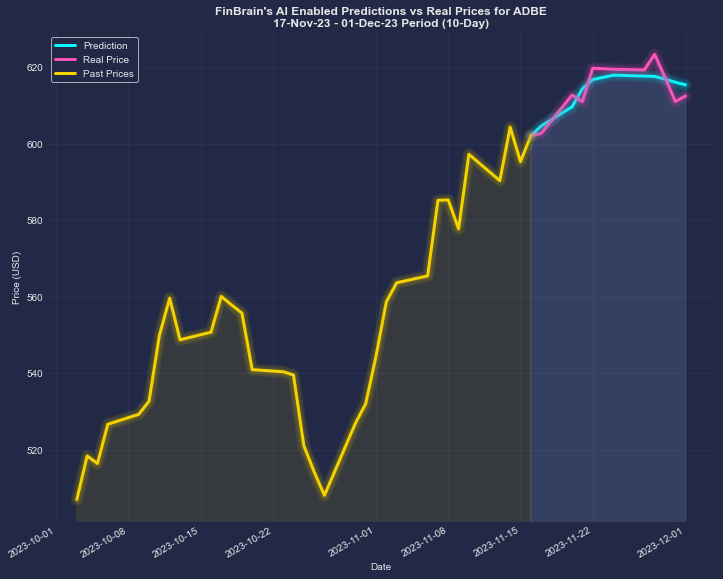20 Good Suggestions For Choosing Ai For Stock Trading Websites
20 Good Suggestions For Choosing Ai For Stock Trading Websites
Blog Article
Top 10 Ways To Evaluate The Strategy Customization Of Ai Stock Trading Platforms
The ability to customize strategies is an essential characteristic of AI trading platforms that predict and analyze stocks which allows traders to adapt the platform to meet their particular trading needs as well as their risk tolerance and market conditions. A platform offering a range of customizations can enhance your trading. Here are the top ten tips for evaluating the ability to customize your strategy on these platforms:
1. Evaluate Pre-Built Strategy Templates
Variety of templates - Check to see if there are already-built strategies that can be adapted to different trading styles.
Easy of use: Evaluate how easily you can modify and apply these templates according to your requirements.
Performance history: Find out whether the platform provides historical performance statistics on the strategies that have been pre-built.
2. Assessment Custom Strategy
Drag-and drop tools Search for platforms that offer intuitive drag-and-drop interfaces that allow you to design custom strategies.
Coding options: For users who are more advanced, check if the platform supports custom-written coding using a proprietary scripting language (e.g. Python, R).
Flexibility: Ensure the platform lets you set your entry/exit parameters, risk management metrics, and other important components of your strategy.
3. Check for Backtesting Capabilities
Historical data. Examine whether the platform is able to provide sufficient historical data to test your strategy back.
Flexible parameters - Make sure you have the ability to change parameters (e.g. timeframes, indicators) when testing backtests.
Performance metrics - Make sure to see if your platform offers detailed performance indicators (e.g. the winning rate, Sharpe coefficient or drawdown) for all backtested strategies.
4. Evaluate Real-Time Strategy Testing
Paper trading: Check if the platform provides paper trading and simulation modes for testing strategies in real time without taking risks with your capital.
Live testing - Check that you can test strategies using small amounts to see how they work.
Real-time adjustments: Determine whether you are able to tweak strategies in real-time based on market conditions.
5. Evaluation of Integration based on Technical Indicators
Indicator library: Check if the platform offers a comprehensive library of technical indicators (e.g., moving averages, RSI, MACD).
Custom indicators. Ensure that you are able to develop or utilize custom indicators in your strategy.
Combinations of indicators: Check whether the platform supports the combination of several indicators to make more complex strategies.
6. Check for Risk Management Tools
Stop-loss/take-profit: Ensure the platform allows you to set stop-loss and take-profit levels within your strategies.
Size of the position. Determine whether you can create rules for sizing positions (e.g. percentage, set amount) and control the risk.
Risk-reward ratio: Examine the support of the platform to set risk/reward ratios on individual trades or strategies for trading.
7. Evaluate Multi-Asset Strategy Support
Asset classes: Make sure your platform is able to support various asset classes including ETFs, stocks and options.
Cross-asset strategy: See whether you can make strategies that encompass different asset classes (e.g. pairs trading, Hedging).
Market coverage: Find out whether the platform has the services you require (e.g. US, international or cryptocurrencies).
8. Review the automation and Execution
Automated trading: Ensure that the platform supports automated execution of strategies based on predefined rules.
Order types: Check to see if the platform allows for different order types (e.g. limit or market) when you are executing a plan.
Latency: Ensure that the platform is running at minimal latency for trading, especially if employ high-frequency strategies.
9. Take a look at the Strategy Optimization Tools
Parameter Optimization: Make sure whether the platform offers tools to optimize the parameters of strategies (e.g. genetic algorithms grid search).
Machine learning integration. See whether your platform is compatible with machine learning to improve and refine strategies.
Analysis of scenarios: Ensure that the platform is able to test strategies under various market conditions (e.g. volatile bull, volatile, bull or bear).
Read the User Feedback and Community Feedback
User reviews: Research feedback from customers to evaluate the platform's effectiveness for strategy customization.
Community forums - Search for if a platform has a forum that is active and where users can discuss their unique strategies.
Support sources. Be sure to check for tutorials or webinars available to help you create and optimize your strategies.
Bonus Tips
Trial period: Take advantage of a free trial or demo to experience the platform's options for customization.
Scalability is essential. The platform needs to be able handle strategies that are more complex as you trade.
Support for customers: See if you can get help with strategy-related questions or issues.
The following tips can assist you in assessing the capabilities of AI trading platforms to tailor their strategies. You will be able choose the best platform for your trading requirements and makes it possible to you to fine-tune and implement your strategy. A platform offering powerful customization options will allow you to adjust to changing market circumstances and improve your results. See the top ai chart analysis blog for website tips including ai options trading, best ai stock, trade ai, trading ai, best stock analysis website, ai hedge fund outperforms market, trader ai intal, ai investment advisor, chart ai for trading, ai investment app and more.
Top 10 Tips To Evaluate The Educational Resources Of Ai Stock-Predicting/Analyzing Trading Platforms
Examining the educational materials offered by AI-driven stock prediction and trading platforms is vital for traders to know how to make the most of the platform, understand the results and make informed trading decisions. Here are the top 10 tips to determine the usefulness and quality of these educational tools.
1. Comprehensive Tutorials and Guides
Tips: Check if the platform has tutorials that guide you through each step or guides for advanced and beginners.
Why is that clear instructions are helpful for users to use the platform.
2. Webinars, Video Demos, and Webinars
Search for webinars, video demonstrations, or live training sessions.
Why? Visual media and interactivity makes it easier to understand complex concepts.
3. Glossary
Tip - Make sure that the platform has an explanation of the glossary and/or definitions of the most important AI and finance terminology.
Why is this? It will assist users, especially those who are new to comprehend the terminology that are used in the application.
4. Case Studies and Real-World Examples
Tips: Find out if the platform offers case studies, or real-world examples that demonstrate how AI models are used.
Experiments can be used to illustrate the platform’s effectiveness and allow users to relate with the applications.
5. Interactive Learning Tools
TIP: Search for interactive tools such as simulators, quizzes or sandboxes.
The reason: Interactive tools let users to test their skills without risking money.
6. Regularly updated content
Tips: Check to see if the education materials are frequently updated to incorporate changes in the market, new features or changes in the regulatory environment.
Why: Outdated or inaccurate information can cause misunderstandings, and possibly incorrect use of a platform.
7. Community Forums Help, Support and Assistance
Tip: Look for active community forums or support groups in which users can ask questions and share insights.
The reason: Expert advice and support from peers can enhance learning and help solve problems.
8. Certification or Accreditation Programs
TIP: Make sure the platform provides accreditation programs or certification courses.
Why: Recognition of formal learning improves credibility and motivate learners to expand their education.
9. Accessibility and User-Friendliness
Tip. Examine whether the educational materials you are making use of are accessible.
Reason: The ease of access lets users learn according to their own pace.
10. Feedback Mechanism for Educational Content
Tip: Check if you can give your feedback to the platform about the educational material.
What is the reason? User feedback increases the quality and relevancy.
Bonus Tip: Various Learning Formats
To meet the needs of different learners Make sure that the platform is able to accommodate different preferences. various learning options.
By carefully evaluating each of these factors, you will be able to assess whether or not the AI-powered stock prediction system and trading system offers powerful tools to educate you that can assist you in maximizing its potential and take informed trading decisions. See the top rated ai for trading for blog examples including ai for trading, free ai trading bot, ai stocks, stocks ai, ai trading software, trader ai app, ai investing app, free ai trading bot, best stock analysis website, ai hedge fund outperforms market and more.